Exploring the realm of organic pig farming reveals a promising horizon where sustainability meets profitability. Harnessing the power of natural practices, organic pig farming emerges as a beacon of eco-friendly agriculture. In this paradigm shift, meticulous attention to ethical and environmentally conscious methods intertwines with economic viability.
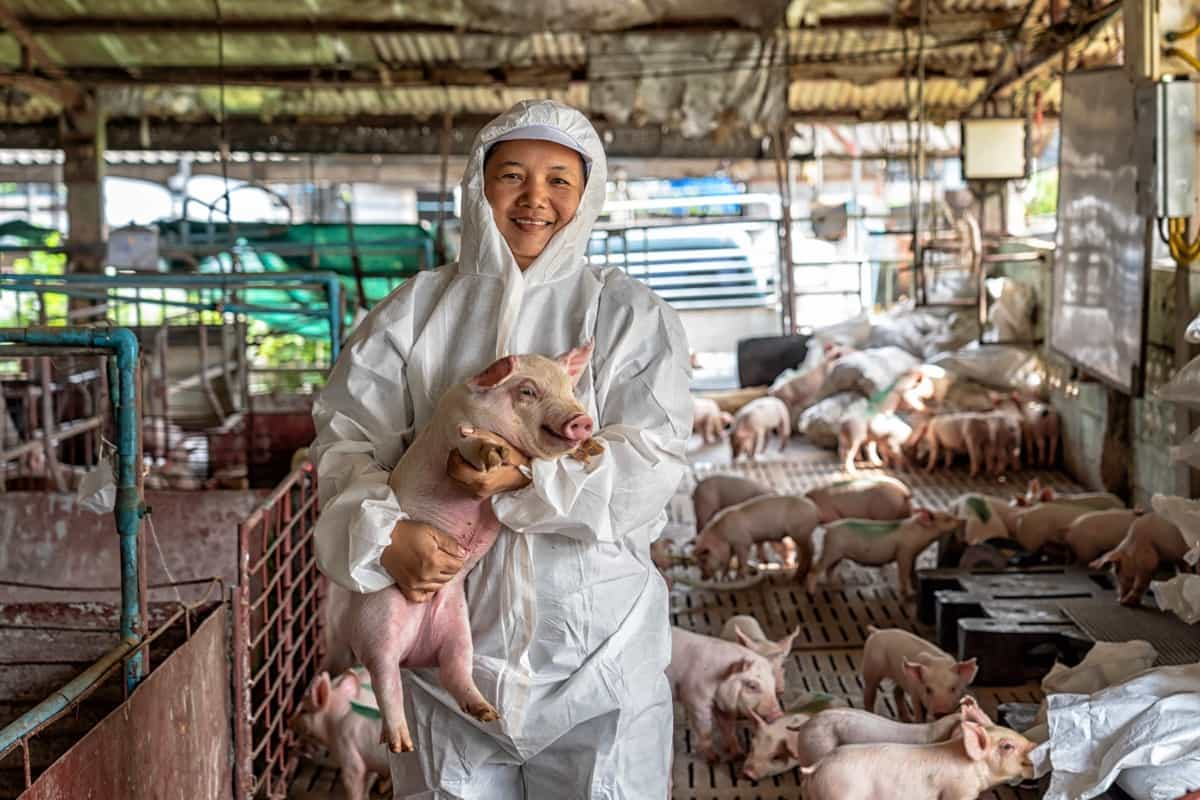
Organic Pig Farming
Organic pig farming is a sustainable method of raising pigs that respects their natural behavior, health, and welfare while protecting the environment and conserving resources. It involves providing outdoor areas for pigs to forage, root, and wallow, feeding them organic feed free of antibiotics, hormones, and GMOs, and providing comfortable shelters. Pigs are not subjected to routine mutilations without anesthesia and are treated with natural or homeopathic remedies when sick or injured.
Organic pig farming benefits both farmers and consumers, as farmers can earn premium prices for their pork and reduce their reliance on external inputs, while consumers can enjoy tasty, nutritious, and safe pork. Pig farming stands out as a highly sustainable industry, thriving even in harsh conditions due to the resilience of pigs. Primarily reared for their meat and skin, including bacon, ham, and gammon, pigs offer an efficient food conversion ratio.
Ecological pig farming involves breeding and feeding domestic pigs, focusing on optimal animal care, health, and nutrition conditions. Organic pig farming takes this further, emphasizing a closed soil-plant-animal cycle and producing high-quality goods. The demand for organic pig feed is significant, driven by the desire to raise healthy pigs. While access to the outdoors is vital for organic pigs, raising them on a farm under organic regulations is not mandatory. Clean and organic bedding, often sourced from crop residue in comprehensive crop rotations, ensures the wellbeing of organic pigs.
In case you missed it: Profitable Pig Breeds: Selecting and Breeding for Success
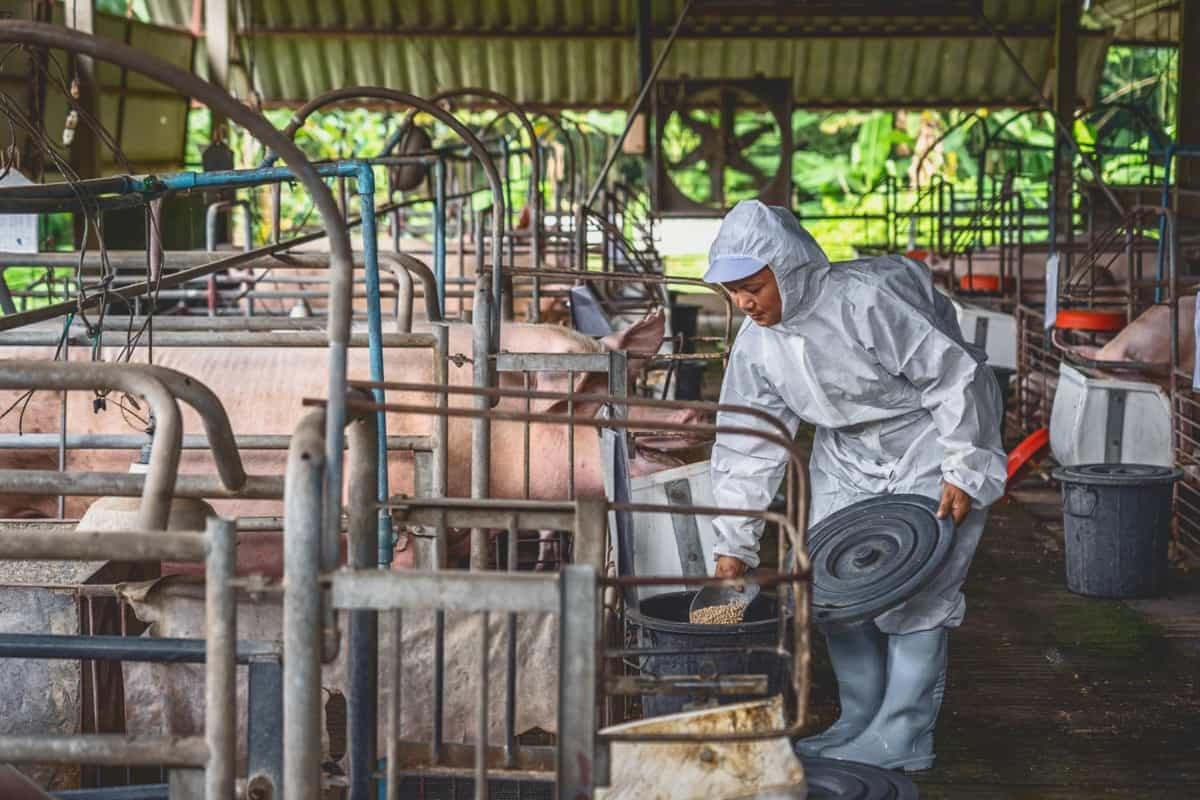
The Benefits of Organic Pig Farming
Organic pig farming presents many advantages, contributing to its appeal as a lucrative and sustainable endeavor. Unlike many other meat-producing animals, pigs exhibit the highest improved feed efficiency. Pigs display remarkable versatility in their diet, consuming a wide array of feedstuffs such as forages, seeds, degraded feed, and even waste, transforming these into valuable, nutritious meat. Despite the potential for lower feed quality with unconventional rations, the adaptability of pigs remains a key asset.
Their short generation cycles add to the allure of pig farming, with sows capable of farrowing twice a year and producing 6 to 12 piglets per farrowing. Additionally, pig farming requires a relatively modest investment in equipment and facilities, making it accessible to many enthusiasts. Beyond financial benefits, pig farming offers employment opportunities and positions individuals as leaders in their own right.
Embarking on pig farming provides economic independence and the potential for passive income, allowing individuals to be their bosses. The simplicity of getting started, even as a part-time venture, underscores the accessibility of this agricultural pursuit. Furthermore, pig farming opens the door to establishing a business monopoly.
Considering its potential to contribute to India’s economy and foster self-employment, pig farming emerges not as a dirty job but as a straightforward and profitable sector. The variety of pig breeds available, including the big white Yorkshire Landrace, Hampshire, and Ghangaru, necessitates careful selection for productivity and stability. Organic pig farming represents a promising avenue for economic growth, self-sufficiency, and success in the agricultural landscape.
How to Implement Sustainable Practices in Organic Pig Farming
Organic pig farming is a sustainable method of animal husbandry that focuses on producing high-quality pork products while ensuring the welfare and health of the pigs. It follows specific principles and standards governing pigs’ management, housing, feeding, breeding, and health care.
This blog post will introduce key aspects of organic pig farming, including choosing the right breeds, creating a healthy environment, providing proper nutrition, managing waste and manure, controlling and preventing diseases, and optimizing reproduction and breeding. Following these guidelines, farmers can produce organic pork that meets consumer expectations for animal welfare, environmental protection, and food quality.
In case you missed it: Large White Pig Facts: Origin, Size, Physical Characteristics, Pros, and Cons
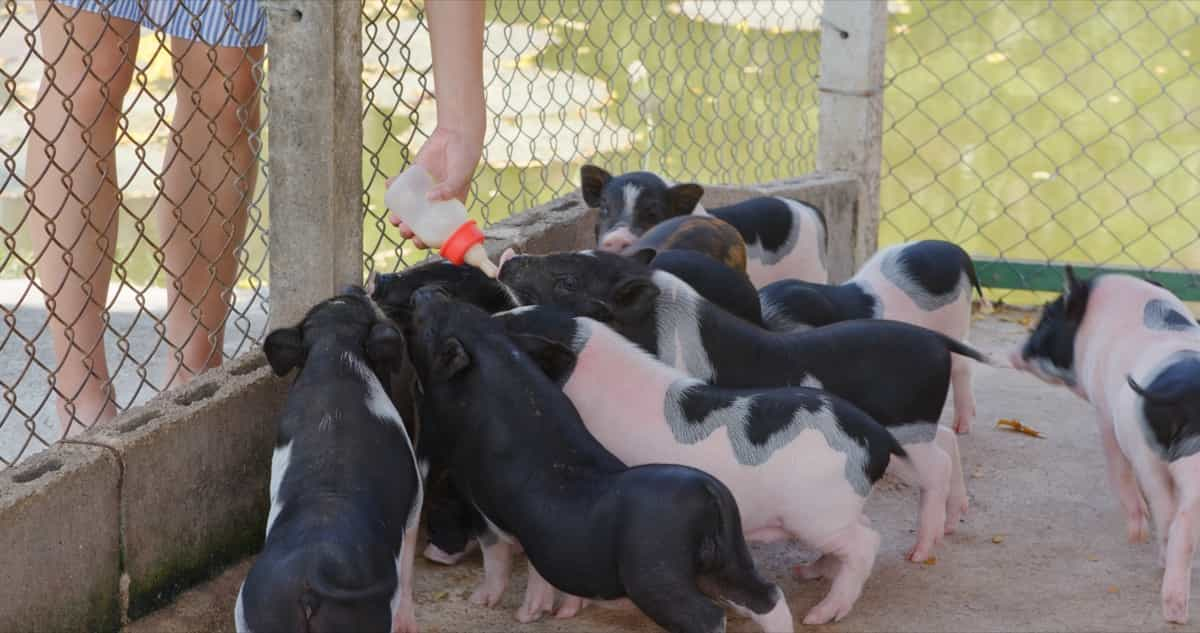
How to Choose the Right Breeds for Organic Pig Farming
Organic pig farming involves selecting suitable breeds based on adaptability, productivity, health, and behavior.
- Berkshire, a black pig with white markings, is known for its high meat quality, marbling, and flavor.
- Tamworth, a red pig with a long snout and erect ears, is active, intelligent, and forages well on pasture.
- Large Black, a large pig with a black coat and lop ears, is calm and friendly, thrives on outdoor systems, has good mothering abilities, high milk production, and excellent meat quality.
- Duroc, a red or brown pig with drooping ears, is fast-growing and efficient, producing lean and tender meat.
To obtain hybrid vigor, cross different breeds to combine desirable traits from both parents. For example, a Berkshire and a Duroc can produce a pig with high meat quality and a fast growth rate. By considering these factors, organic pig farming can be a successful and sustainable practice.
How to Create a Healthy and Natural Environment for Pigs
Organic pig farming requires a healthy and natural environment for the pigs. This includes providing adequate space for piglets, weaners, growers/finishers, and sows, with minimum requirements varying based on age and weight. Outdoor access should be provided for grazing, rooting, and exploring, with secure fencing and adequate shade, shelter, water, and feed sources.
Comfortable bedding with organic materials like straw, hay, or wood shavings should be provided for pigs to rest and nest. These measures ensure the pigs can freely move and express their natural behaviors without overcrowding.
How to Provide Proper Nutrition for Organic Pigs
- One of the main challenges of organic pig farming is to provide adequate and balanced nutrition for the pigs, using only organic feed ingredients.
- Organic pigs need a diet that meets their energy, protein, mineral, and vitamin requirements, depending on their age, stage of production, and environment.
- The main ingredients in organic pig feed are cereals (such as wheat, barley, oats, or maize), legumes (such as peas, beans, or soybeans), oilseeds (such as sunflower or rapeseed), and forages (such as grass, clover or alfalfa).
- Some organic farmers supplement their pigs’ diet with alternative feeds, such as fruits, vegetables, roots, tubers, nuts, or seeds.
- These feeds can provide additional nutrients and diversity to the pigs’ diet and reduce feed costs and waste.
- However, they should be used with caution, as they may also contain harmful substances (such as pesticides or toxins), pathogens (such as bacteria or parasites), or anti-nutritional factors (such as tannins or lectins). Organic pigs also need access to clean and fresh water at all times.
- Water is essential for the pigs’ digestion, metabolism, thermoregulation, and health. Water quality and quantity should be monitored regularly, and water sources should be protected from contamination and pollution.
How to Manage Waste and Manure in Organic Pig Farms
Organic pig farming requires sustainable and environmentally friendly management of waste and manure. These resources provide organic matter and nutrients for soil and crops but can also pose environmental and human health risks. An integrated approach should be adopted to manage waste and manure effectively, considering source reduction, collection, and treatment. Source reduction involves optimizing feed intake, minimizing water consumption, and avoiding overstocking or overcrowding.
In case you missed it: Hampshire Pig Facts: Origin, Size, Physical Characteristics, Pros, and Cons
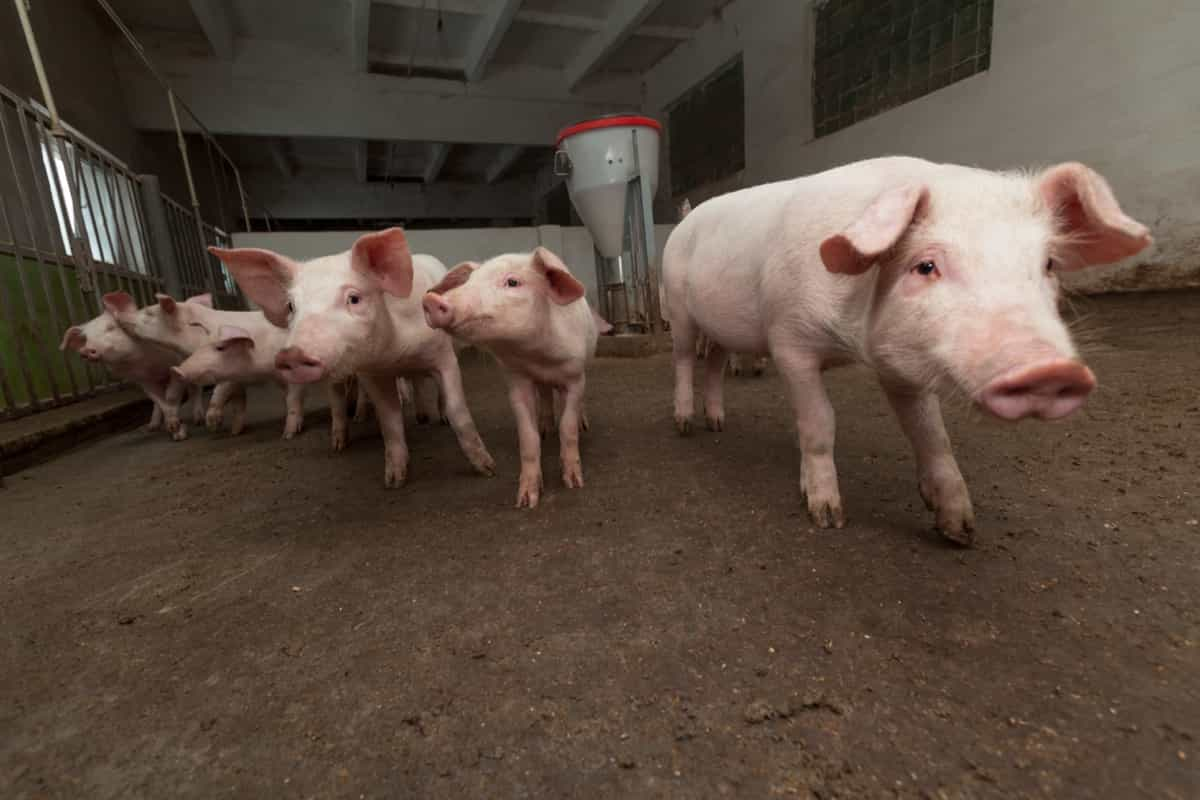
Collection involves collecting waste and manure from pigs’ housing or outdoor areas, using appropriate equipment and methods to prevent spillage or leakage. The collected waste should be stored in containers or structures that prevent rain, sun, or wind exposure. Treatment transforms waste and manure into a stable, safe form for fertilizer or soil amendment, with composting being the most common method. This integrated approach ensures a sustainable and eco-friendly approach to organic pig farming.
How to Control and Prevent Diseases in Organic Pig Farming
Disease control and prevention in organic pig farming are for maintaining the health and wellbeing of the livestock. Organic pig farming often relies on natural methods, avoiding synthetic medications and antibiotics. Implementing strict biosecurity measures, such as quarantine protocols for new animals, regular health checks, and maintaining a clean and sanitary environment, is fundamental.
Proactive disease prevention involves strategic vaccination programs, emphasizing organic and natural vaccines whenever possible. Proper nutrition, focusing on balanced organic diets, boosts the immune system, reducing disease susceptibility. Regular monitoring, and early detection of symptoms are vital in controlling potential outbreaks. Integrating herbal supplements known for their immune-boosting properties can also be considered in disease prevention strategies.
How to Optimize Reproduction and Breeding in Organic Pig Farming
Efficient reproduction and breeding practices are essential for the success of organic pig farming. Organic methods prioritize natural breeding processes without resorting to artificial hormones. Selection of high-quality breeding stock based on genetic traits, health, and reproductive performance is critical.
Optimizing reproduction involves carefully managing sow nutrition, ensuring proper housing conditions, and maintaining a stress-free environment. Monitoring the estrus cycle and implementing controlled mating techniques contribute to successful breeding outcomes. Natural farrowing practices, with minimal intervention, align with organic principles.
Regulatory Compliance and Certification for Organic Pig Farms
Achieving and maintaining organic certification involves adherence to stringent regulatory standards. Compliance with organic farming regulations ensures the authenticity of organic products and access to premium markets. Organic pig farmers must follow guidelines related to feed quality, land use, and animal welfare.
The certification process involves documentation of farming practices, inspection of facilities, and verification of compliance with organic standards. Understanding and meeting these standards is essential for market access and consumer trust. Ongoing record-keeping, transparency in farming practices, and staying informed about evolving organic regulations are vital to maintaining certification in organic pig farming.
Ingredients in Organic Pig Feed
Organic pig farming prioritizes the use of natural ingredients in pig feed. The feed aims to support the pigs’ health and wellbeing while adhering to organic principles. Common organic feed ingredients include forages, seeds, and degraded feed. Organic pigs are not treated with antibiotics routinely, in contrast to non-organic counterparts, ensuring a more natural and healthy approach to farming.
In case you missed it: Kolbroek Pig Facts: Origin, Size, Physical Characteristics, Pros, and Cons
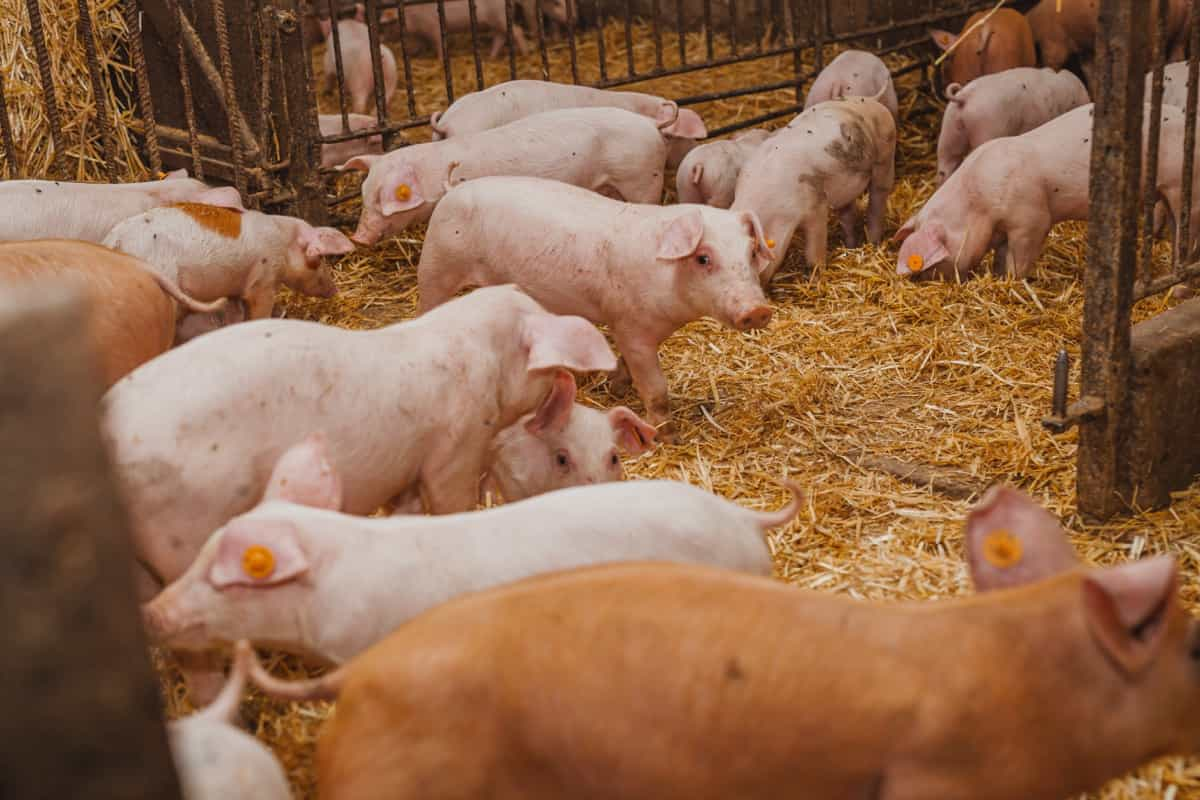
Design of Organic Pig Farms
In organic pig farming, farm design plays a role in promoting the wellbeing of the animals. Providing outdoor access year-round is standard practice, although indoor housing is allowed during severe weather conditions. Maintaining proper distances between pig farms and different age groups is essential to prevent the spread of diseases. Adequate ventilation and avoiding overcrowding contribute to disease prevention and better performance. The office’s proximity to the loading ramp and managing stress-inducing practices are key considerations for successful organic pig farming.
Health and Wellbeing in Organic Pig Production
Ensuring the health and wellbeing of organic pigs is a primary challenge for producers. High-quality beef is prioritized, and non-genetically engineered vaccines are encouraged. Supplementary iron injections for newborn pigs prevent anemia, while using feed additives like probiotics and organic acids is permitted to enhance animal wellbeing.
Artificial insemination is acceptable, but the administration of hormones for synchronization or induction is prohibited in organic agriculture. Additionally, organic piglets must graze for at least one year before moving to a new field, promoting a natural and holistic approach to their development in organic pig farming.
Frequently Asked Questions on Organic Pig Farming
What Are the Benefits of Organic Pork Farming?
Organic pig farming offers producers premium prices, promoting excellent animal welfare and environmental benefits. The demand for organic products is rising, aligning with consumer preferences for local, sustainable, and environmentally friendly food.
How Does the Conversion Process Work for Organic Pig Farming?
Conversion to organic farming varies by country, with the process in the UK taking up to three years. Farmers often start with non-organic animals, and sows undergo a conversion period before producing organic young stock on organic land. Artificial insemination is permitted, but there may be restrictions.
What Health and Treatment Practices Are Allowed in Organic Pig Farming?
Organic standards restrict the use of conventional veterinary medicines. Homeopathic and herbal preparations are preferred, but chemical medicines are permitted to prevent suffering. Proactive husbandry practices are encouraged to minimize pest and disease issues, reducing reliance on chemical treatments.
In case you missed it: Australian Yorkshire Pig Facts: Origin, Size, Physical Characteristics, Pros, and Cons
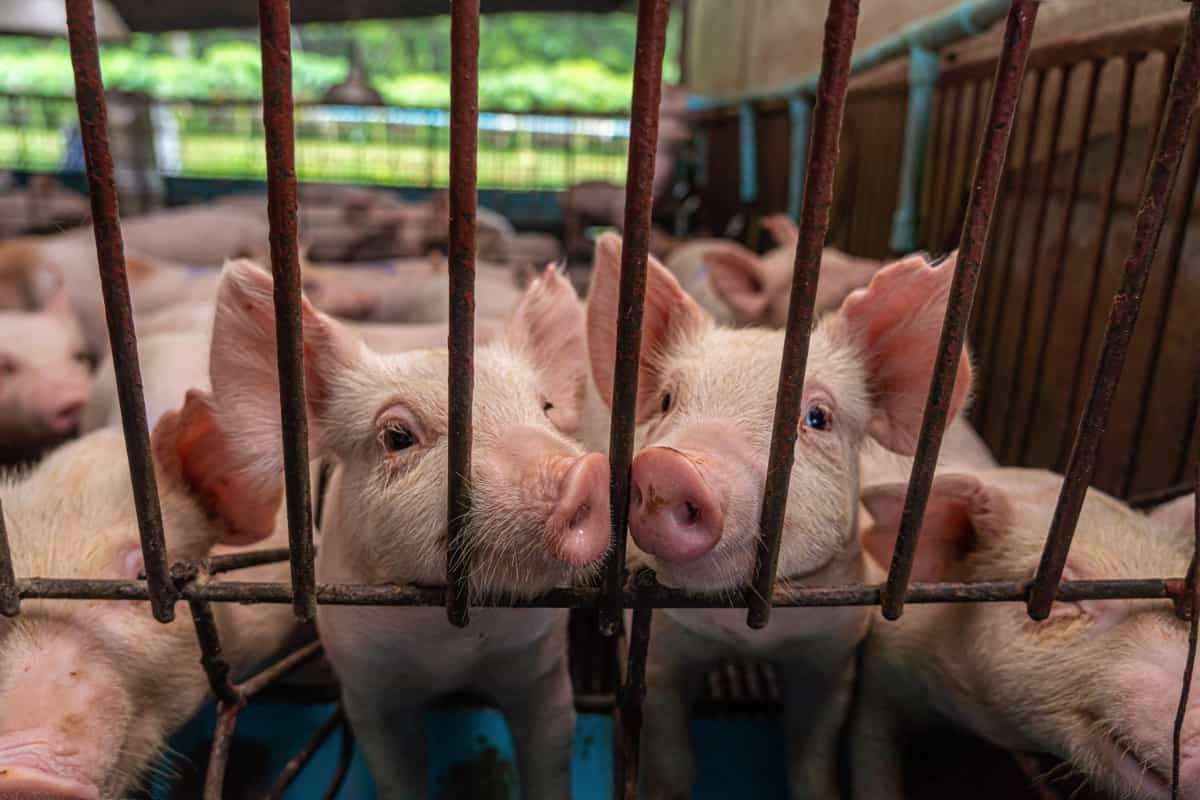
What are the Housing Requirements for Organic Pigs?
Pigs should have outdoor access year-round, and land should be relatively level and free draining. Good land rotation is essential, prohibiting synthetic fertilizers, herbicides, and pesticides. Regulations vary by country, emphasizing the importance of understanding local requirements.
Conclusion
Organic pig farming emerges as a sustainable and profitable venture, aligning with consumer preferences for eco-friendly practices. Balancing economic viability with environmental consciousness holds the key to a promising and harmonious future in pig farming.
- How to Make Houseplants Bushy: Effective Tips and Ideas
- Innovative Strategies for Boosting Coconut Pollination and Yield
- Pollination Strategies for Maximum Pumpkin Yield
- The Complete Guide to Chicken Fattening: Strategies for Maximum Growth
- Natural Solutions for Tulip Problems: 100% Effective Remedies for Leaf and Bulb-Related Issues
- Revolutionizing Citrus Preservation: Towards a Healthier, Greener Future
- Natural Solutions for Peony Leaf and Flower Problems: 100% Effective Remedies
- Maximizing Profits with Avocado Contract Farming in India: A Comprehensive Guide
- Natural Solutions for Hydrangea Problems: 100% Effective Remedies for Leaf and Flowers
- The Ultimate Guide to Choosing the Perfect Foliage Friend: Bringing Life Indoors
- From Sunlight to Sustainability: 15 Ways to Use Solar Technology in Agriculture
- The Ultimate Guide to Dong Tao Chicken: Exploring from History to Raising
- The Eco-Friendly Makeover: How to Convert Your Unused Swimming Pool into a Fish Pond
- Mastering the Art of Delaware Chicken Farming: Essentials for Healthy Backyard Flocks
- 20 Best Homemade Fertilizers for Money Plant: DIY Recipes and Application Methods
- How to Craft a Comprehensive Free-Range Chicken Farming Business Plan
- Brighten Your Flock: Raising Easter Egger Chickens for Beauty and Bounty
- How to Optimize Your Poultry Egg Farm Business Plan with These Strategies
- Subsidy for Spirulina Cultivation: How Indian Government Schemes Encouraging Spirulina Farmers
- Ultimate Guide to Raising Dominique Chickens: Breeding, Feeding, Egg-Production, and Care
- Mastering the Art of Raising Jersey Giant Chickens: Care, Feeding, and More
- Ultimate Guide to Raising Legbar Chickens: Breeding, Farming Practices, Diet, Egg-Production
- How to Raise Welsummer Chickens: A Comprehensive Guide for Beginners
- How to Protect Indoor Plants in Winter: A Comprehensive Guide
- Ultimate Guide to Grow Bag Gardening: Tips, Tricks, and Planting Ideas for Urban Gardeners
- Guide to Lotus Cultivation: How to Propagate, Plant, Grow, Care, Cost, and Profit
- Agriculture Drone Subsidy Scheme: Government Kisan Subsidy, License, and How to Apply Online
- Ultimate Guide to Raising Araucana Chickens: Breed Profile, Farming Economics, Diet, and Care
- Bringing Hydroponics to Classroom: Importance, Benefits of Learning for School Students
- Ultimate Guide to Raising Polish Chickens: Breed Profile, Farming Economics, Diet, and Care
- Ultimate Guide to Raising Australorp Chickens: Profile, Farming Economics, Egg Production, Diet, and Care
- Silkie Chicken Farming: Raising Practices, Varieties, Egg Production, Diet, and Care
- Sussex Chicken Farming: Raising Practices, Varieties, Egg Production, Diet and Care
- Homemade Feed Formulations for Livestock: Discover Cost-effective Starter to Finisher Feed Recipes
- 20 Best Pig Weight Gain Supplements: Top Swine Weight Gain Formulas
- Ultimate Guide to Elderberry Farming: Propagation, Planting, Yield, Cost, and Profit